Rosacea in Virginia, Washington D.C. and Maryland.
Face the challenge of rosacea head-on! At The Naderi Center in Virginia, our aestheticians offer innovative Rosacea Treatment to rejuvenate your skin. Utilizing cutting-edge techniques, you’ll experience reduced redness and an enhanced complexion. Get ready for a transformative journey to healthier, more radiant skin.
Embark on a journey of aesthetic excellence with The Naderi Center. Experience unparalleled artistry and precision for transformative beauty.
Revive Your Skin's Glow with the Benefits of Rosacea Treatment
Unlock a world of benefits with advanced Rosacea Treatment. Gone are the days of struggling with persistent redness, flare-ups, and discomfort. With our cutting-edge treatment options, you can step into a new era of skin health and confidence, achieving the radiant complexion you’ve always desired.
Reduced Redness
Experience an immediate reduction in facial redness and restore your skin's natural glow.
Enhanced Texture
Say goodbye to rough, uneven skin. Our treatments smoothen your complexion for touchable, soft skin.
Long-lasting Results
Not just a quick fix! Benefit from prolonged relief and enjoy a perpetually clearer, more vibrant appearance.
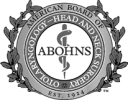

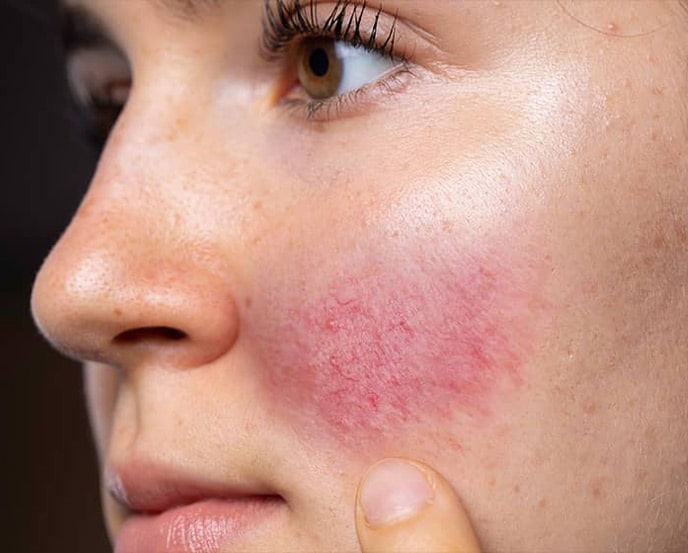
What is Rosacea?
Rosacea is a very common skin condition, estimated to affect nearly 16 million Americans. Rosacea, is a chronic relapsing inflammatory skin condition that causes facial flushing, redness, and in some cases, visible blood vessels. If left untreated, rosacea may develop into tiny, red, pustule-like bumps on the face. Episodes of rosacea can wax and wane, with flare-ups sometimes lasting a few weeks to months and then going away on their own.
Rosacea tends to develop usually after age 30, more commonly affecting individuals with fairer skin. Seen more commonly in women, rosacea is more severe when it affects men. There does also appear to be a genetic component/hereditary factor to rosacea. Although there is no cure for rosacea, there are many effective treatments that can be successfully administered under the direction of a dermatologist or trained physician.
Causes of Rosacea
The exact causes of rosacea are unknown, however, there are a few theories that attempt to explain why some people have a constant state of facial redness.
Vascular Dysfunction
Vascular dysfunction may be linked to increased levels of vascular endothelial growth factor (VEGF), prostaglandin E2 (PGE2), and pro-inflammatory cytokines. VEGF stimulates the growth and development of new blood vessels. It also increases the permeability of the capillaries, resulting in plasma (a component of blood) being leaked into the surrounding tissues, inducing an inflammatory response and causing redness and irritation.
PGE2 is a group of hormone-like substances that participate in vasodilatation – the dilation of the capillary walls.
Inflammation
Pro-inflammatory cytokines are a part of the flushing and chronic inflammatory response known to be linked to Rosacea. Links to the parasitic dermodex mite have also been found. Human sebaceous follicles are inhabited by the dermodex mite. Studies have found increased levels of the mite in rosacea patients. The proliferation of the mite causes increased irritation.
Chemical Triggers
Although the cause of rosacea is still unclear, there are many known common triggers. Avoiding these triggers is an important part of controlling your rosacea.
- Alcohol consumption
- Spicy and acidic foods
- Hot beverages
- Hot environments like hot showers, steam rooms and hot tubs
Diagnosis of Rosacea
There are various clinical signs and symptoms that can suggest you have rosacea. A dermatologist or trained physician will be able to make an accurate diagnosis and start an effective treatment. The following signs and symptoms may be indicative that you have rosacea.
Persistent symmetric flushing and redness
This is one of the most common symptoms of Rosacea, those suffering from rosacea report a history of persistent facial flushing and redness. Some individuals may even report a sense of warmth or heat that comes on with the flushing.
Thickened skin, especially on the nose (phymatous changes)
Excess tissue production with rosacea causes the skin to thicken. This is most commonly seen as a disfigurement of the nose called a “rhinophyma”. In some patients, rhinophymas can be so severe that they affect breathing.
Inflammatory lesions (red papules and pustules)
In more chronic forms of rosacea, patients may notice small red bumps or pus-filled pimples. It is easy to miss a diagnosis of rosacea and misdiagnose a patient with acne. A key differentiating factor is that a stinging and burning sensation is associated with the bumps and pustules.
Small visible blood vessels, telangiectasias
Often found on the cheeks, mid-face, and nasal bridge, some patients with rosacea have prominent small blood vessels. These small blood vessels are known as telangiectasias.
Facial warmth, burning, or stinging sensation
In the early development of the condition, some individuals with Rosacea may report warmth, burning, or stinging in and around where their face is red.
Red and watery eyes
The eyes can also be affected by rosacea, known as ocular rosacea. Ocular rosacea may manifest as irritated, bloodshot, and watery eyes. Sometimes even the eyelids appear irritated, swollen, and red. Severe cases of ocular rosacea can lead to infections such as styes and even vision changes.
Facial Edema
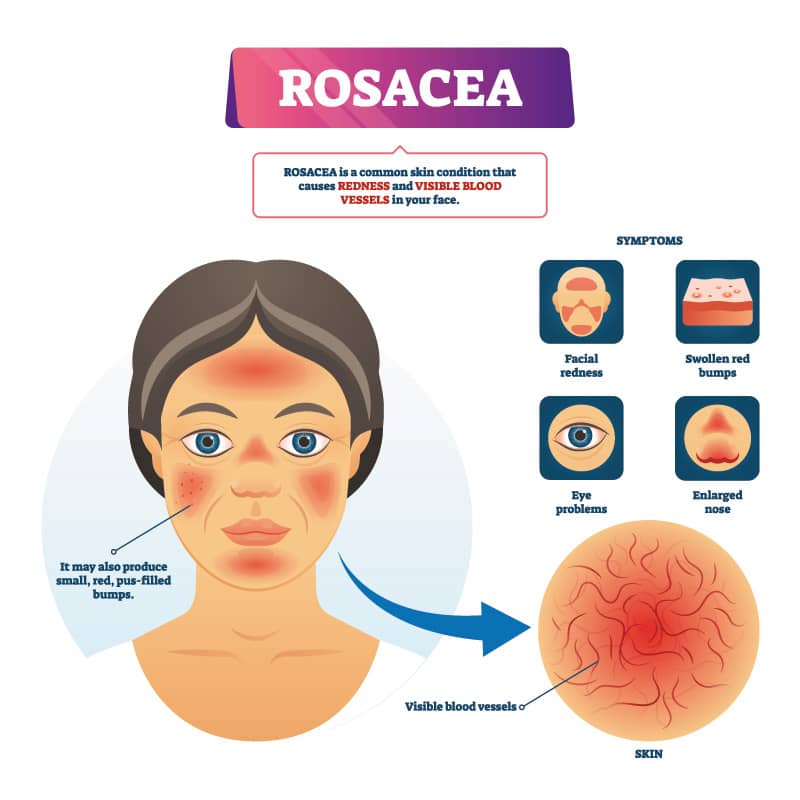
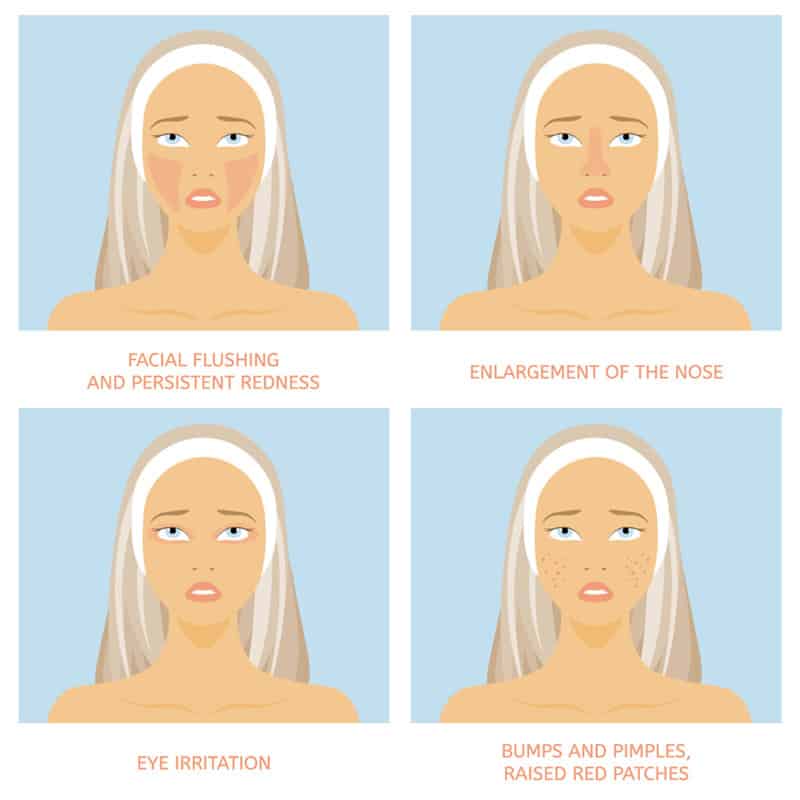
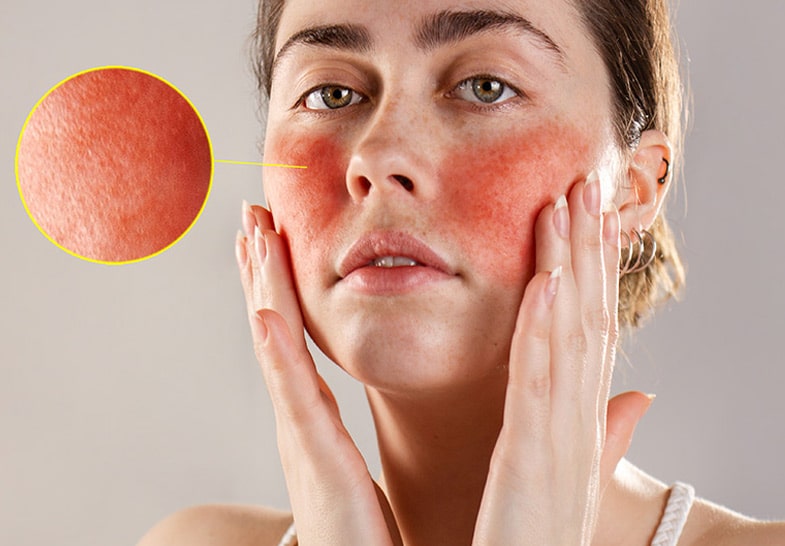
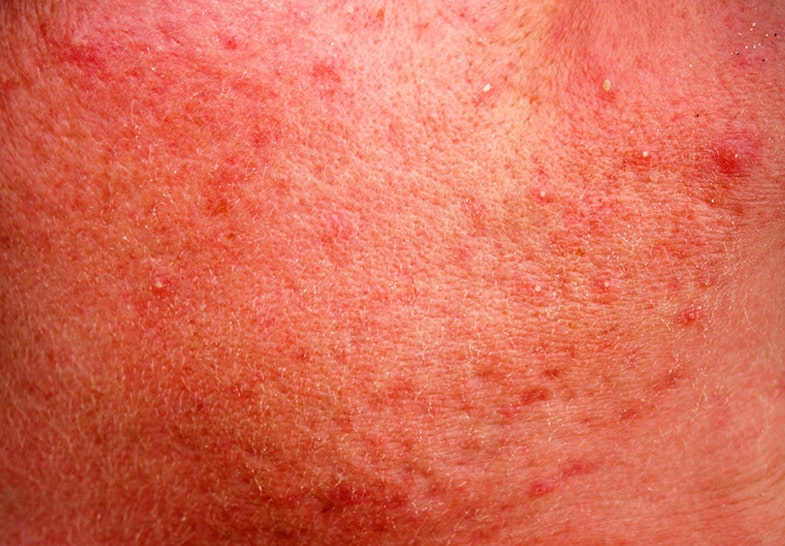
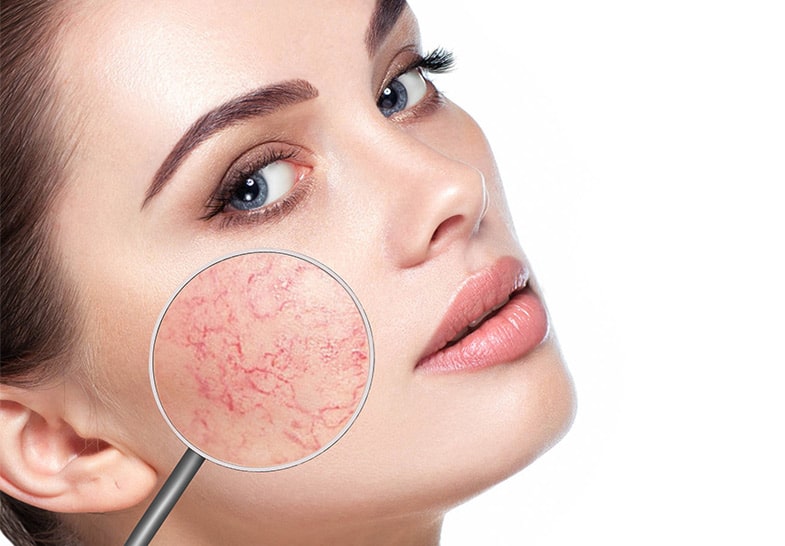
Testimonial
“Their aesthetician has been taking care of my skin for two years now and it has been nothing but amazing!!! She exceeds my expectations every single time! While I don’t suffer from acne, I do have some redness that bothers me and she has customized a skincare regimen for me that has worked wonders! She is highly experienced and knowledgeable about all things skincare. If you are looking for an amazing esthetician and an overall great practice, I highly recommend The Naderi Center.”
Prevention of Rosacea
Before discussing what treatment options there are to help with rosacea flare-ups, it is more important to evaluate how we can help prevent rosacea. Discovering your rosacea triggers is the first step towards achieving clearer skin.
Top 9 ways to prevent rosacea
- Do not consume, or minimize consumption of, alcoholic beverages. Drink white wine over red wine.
- Minimize stress
- Avoid spicy foods
- Avoid hot beverages
- Do not use harsh or drying skincare and haircare products. Ingredients such as menthol, eucalyptus oil, clove oil, peppermint, witch hazel, amphor, or sodium lauryl sulfate can aggravate rosacea. Avoid using washcloths, toners, astringents, and exfoliating scrubs.
- Sun avoidance and photoprotection. Protect your skin from the sun by either direct avoidance or at the least applying sunscreen with a minimum SPF of 30, especially if you have fair skin. Many sunscreen products containing titanium dioxide or zinc oxide can be irritating, products with simethicone or dimethicone may be better tolerated.
- Avoid extreme temperatures and humidity. Protect your skin from getting too hot (sunny days, fireplaces, saunas, hot tubs, steam rooms, and even over-exercising) and too cold.
- Make sure your make-up is not causing your rosacea. Avoid using heavy make-up and waterproof foundations.
- Review your medication list and see if any items contain ingredients that may be triggering your rosacea. Sildenafil, calcium channel blockers, nitrates, nicotinic acid, and some vitamin B-related medications can worsen rosacea.
Treatment of Rosacea
Topical Prescription Medications
The endoscopic brow lift is a procedure that elevates the brow using small incisions. The endoscopic technique utilizes 4-5 small (1cm) incisions placed behind the hairline. A specialized camera device known as an endoscope is utilized to help the surgeon visualize the surgical region and assist with elevation of the forehead and brows to the desired position. A small fixation device known as an endocrine is placed to secure the brow in an elevated position. Over a period of 3-6 months, the endotine will dissolve as the brow and forehead heal and a youthful appearance is restored. When patients have a high hairline or significant forehead skin laxity, Dr. Kulak modifies the endoscopic brow lift. She shortens the forehead length by removing skin through a hidden incision along the hairline (pre-trichial modification). The benefit of this type of incision is that it is specifically designed to heal with minimal scarring and is well concealed by the hairline.
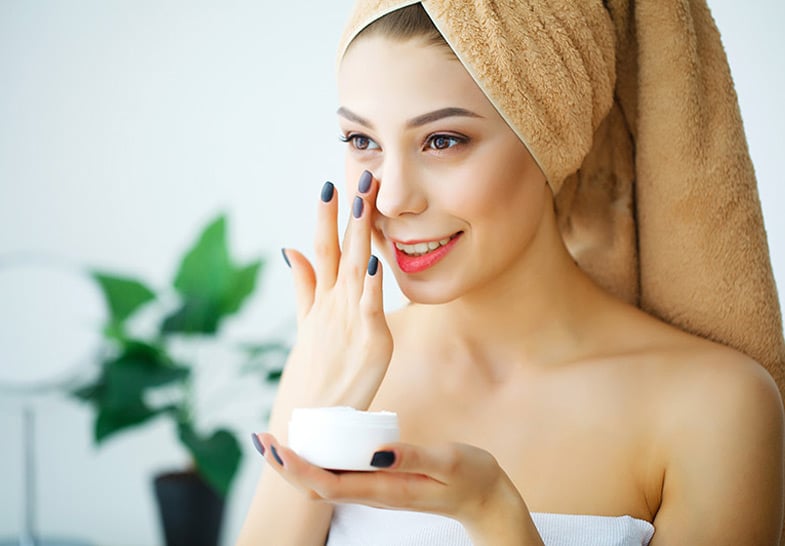
Metronidazole 0.75% gel has been used to effectively reduce redness and pustules in many patients. Metronidazole gel has anti-inflammatory properties that suppress some of the skin’s immune system cells from releasing inflammatory chemicals that lead to rosacea flare-ups.
Topical azelaic acid is an over-the-counter medication preparation which has anti-inflammatory properties, helping to reduce redness and prevent skin thickening. Possible adverse effects include mild temporary skin irritation.
Isotretinoin or Retin-A ®️ is a medication that is used to treat acne and has also been used successfully with rosacea to help prevent skin thickening.
Oral Prescription Medications
Low-dose doxycycline. The U.S. Food and Drug Administration (FDA) has approved low-dose doxycycline for the prevention and treatment of the red pustules associated with rosacea. Doxycycline is an antibiotic, however, in its low-dose formulation, it does not act as an antibiotic and, instead, is thought to work more as an anti-inflammatory agent. Sometimes other low-dose antibiotics such as erythromycin and clarithromycin may be utilized.
Oral isotretinoin, otherwise known as Accutane®️, is often the medication of last resort reserved for patients that are unable to tolerate or respond to other therapeutics. Low-dose Isotretinoin (10 mg daily) has been shown to improve erythema, papules, and telangiectasias and has less risk of adverse effects. Patients on oral isotretinoin need to be closely monitored by a physician to monitor liver function as well as to educate about the risk of birth defects.
Intense Pulsed Light (IPL) Therapy
IPL, or photorejuvenation, is a laser treatment frequently used to reduce and diffuse redness and facial telangiectasias, broken or distended facial capillaries, at the same time. improving skin texture and pore size. IPL also aids in the reduction of papules and pustules (or breakouts) often associated with rosacea. More recent studies have shown that photorejuvenation, or Intense Pulsed Light, also helps to reduce heightened levels of VEGF, vascular endothelial growth factor, in rosacea patients, thus, hindering new vascular growth on the face.
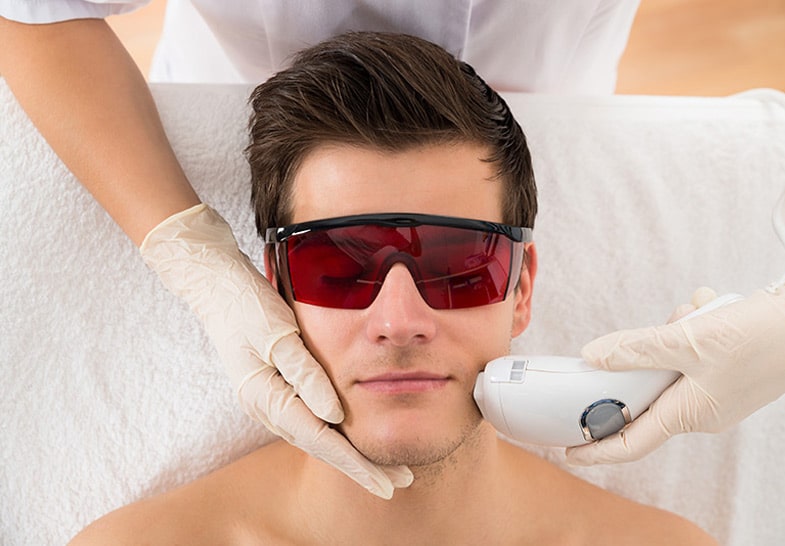
Topical Medical Grade Skincare Products
At The Naderi Center, we carry a number of gentle and safe medical grade skincare products that are helpful in treating rosacea.
ZO® Skin Health Recommend Rosacea Products
Gentle Cleanser for All Skin Types – 60 mL / 2 Fl. Oz.
Exfoliating Polish – Net Wt. 16.2 g / 0.57 Oz.
Oil Control Pads Acne Treatment – 60 Pads, 75 mL / 2.5 Fl. Oz.
Daily Power Defense – 30 mL / 1 Fl. Oz.
Rozatrol® Normalizing Serum – 20 mL / 0.67 Fl. Oz.
Rosacea Customized Facials
Regular in-office facial treatments are an important part of controlling rosacea. The most important aspect of treatment is the reduction of inflammation and redness. Products containing high levels of omega-3 and omega-6 fatty acids provide powerful anti-inflammatory characteristics. Supporting botanicals such as chamomile, Japanese green tea extract, and cucumber extract also help to soothe and calm. Green and brown algae extracts help to interrupt the inflammatory process by reducing VEGF and PGE2 expression.
Desquamation and cell turnover are improved using gentle exfoliating treatments without causing irritation. Topical application of retinol and other Vitamin A derivatives help speed the production and proliferation of new healthy cells.
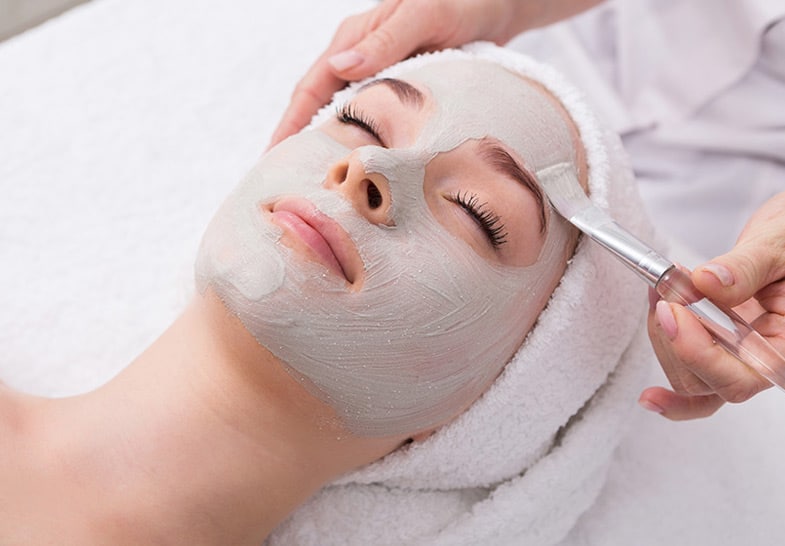
Green Tinted Make-up
Although green tinted make-up will not treat your rosacea, it is great for helping to cover it up while you are seeking treatment.
Rosacea Specialists, Dr. Alexandra Snodgrass
Board Certified dermatologist Dr. Alexandra Snodgrass is extremely knowledgeable and skilled in the management of rosacea. Our specialist approaches each patient as an individual and strives to develop treatment plans that are customized to their lifestyle and goals. Not all skin types are the same, and not all rosacea is the same. While one individual’s rosacea can be managed with topical skincare and light treatments, another may need to be placed on oral medication. Dr. Snodgrass has extensive training in both invasive and non-invasive treatment options that can improve the appearance of your rosacea and minimize outbreaks.
Known as a leader in skincare and cosmetic procedures, The Naderi Center has been serving patients in the Virginia, Maryland, and Washington D.C. area for more than 10 years. The Naderi Center is known for being the source of physicians and surgeons who are specialized in their realm and scope of practice. Patients come to The Naderi Center when they want an expert on the procedure or condition they are trying to improve. Contact one of The Naderi Center’s two offices for more information, or to schedule your rosacea consultation. A patient coordinator can be reached at our Reston, Virginia office at 703-481-0002 and at our Chevy Chase, Maryland office at 301-222-2020.
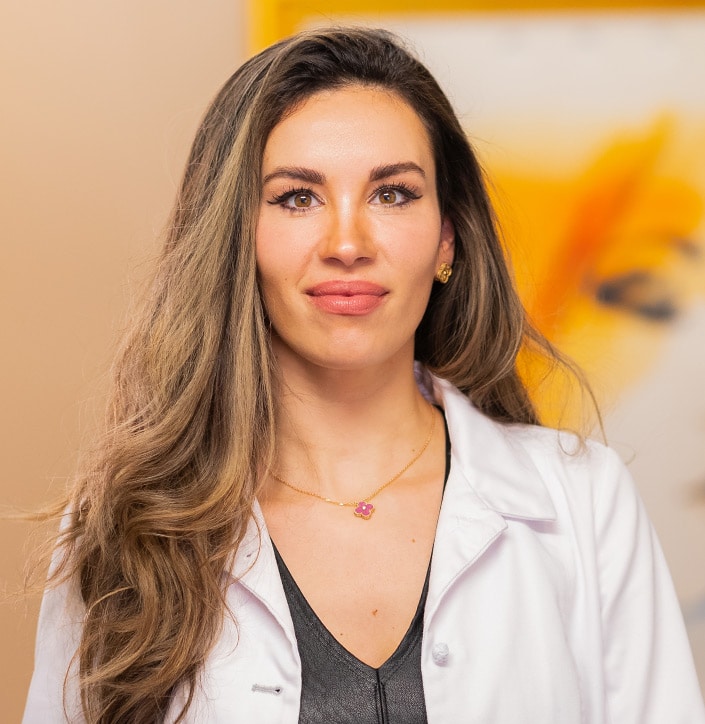
Rosacea FAQs
What causes rosacea flare-ups?
Rosacea flare-ups can be triggered by a variety of factors, including exposure to sunlight, hot or cold weather, spicy foods, alcohol, stress, and certain skincare products. Other common triggers include intense exercise, hot baths or saunas, and certain medications. It is important for individuals with rosacea to identify their specific triggers in order to help manage and prevent flare-ups. In some cases, underlying medical conditions such as gastrointestinal issues or hormonal imbalances may also contribute to rosacea flare-ups.
Who specializes in treating rosacea?
Rosacea is managed by Dr. Alexandra Snodgrass, a board-certified dermatologist with extensive training in both topical and oral treatments, as well as light-based therapies.
How to calm a rosacea flare-up fast?
To calm a rosacea flare-up quickly, first, gently cleanse the affected area with a mild, non-abrasive cleanser. Apply a cold compress or ice pack to reduce inflammation and redness. Avoid triggers such as spicy foods, alcohol, and extreme temperatures. Use a soothing moisturizer with anti-inflammatory ingredients like chamomile or cucumber extract. If necessary, consult with a dermatologist for prescription medications or treatments. Remember to always protect your skin from the sun and avoid harsh skincare products that can further irritate your skin.
How do you know if you have rosacea?
Rosacea is a common skin condition that typically presents with redness, visible blood vessels, and acne-like bumps on the face. Symptoms can vary from person to person but may include flushing, persistent redness, bumps or pimples, and visible blood vessels. If you experience any of these symptoms, especially if they worsen over time or do not respond to over-the-counter treatments, it is recommended to see a dermatologist for a proper diagnosis and treatment plan.
How long does rosacea last?
The duration of rosacea flare-ups varies from person to person. Some individuals may experience mild symptoms that come and go, while others may have more persistent and severe symptoms. Without proper treatment, rosacea can worsen over time. It is important to work with a dermatologist to develop a personalized treatment plan to manage and reduce the symptoms of rosacea. With the right care and maintenance, many individuals are able to effectively control their rosacea and minimize flare-ups for the long term.
What Rosacea Treatment Office Is Near Me?
If you live in the states of Virginia or Maryland, The Naderi Center for Plastic Surgery and Dermatology offers rosacea among its services. For a full list of services, please visit our Locations page.